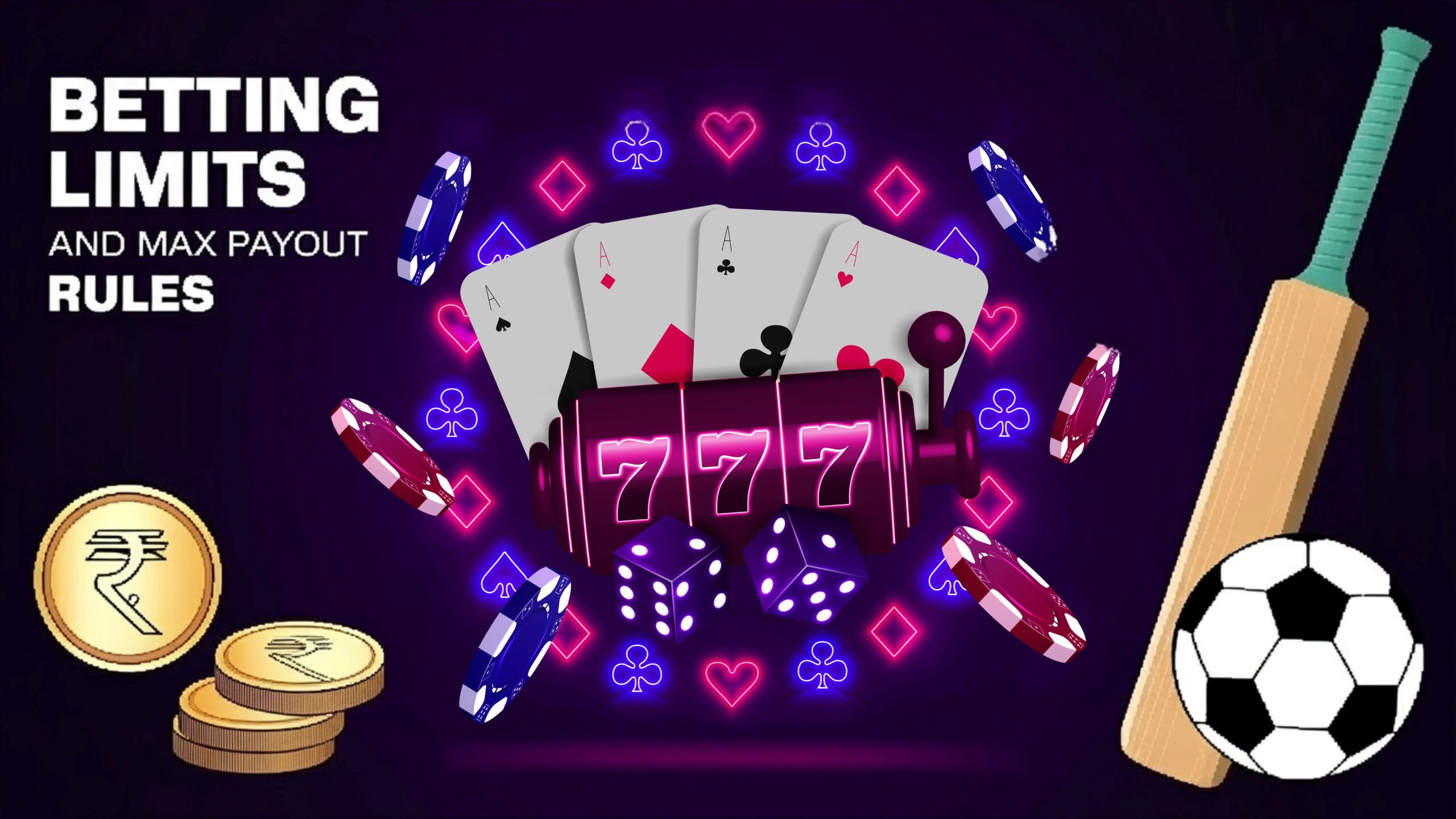Betting has long been a part of Indian culture, from traditional games played in local communities to the booming online betting industry. But one question that often pops up for newcomers and seasoned bettors alike is — how much can you actually bet in India? This leads us straight into the world of betting limits and maximum payout rules in the Indian betting landscape. Whether you’re a cricket fanatic placing bets on the IPL or a casino enthusiast spinning slots, understanding these rules can seriously change the game for you. So, buckle up, and let’s break down the essentials in a way that’s simple, clear, and practical.
What Are Betting Limits?
Betting limits are essentially the boundaries set by a bookmaker or betting platform that determine how little or how much you’re allowed to wager on a specific bet. These limits can vary depending on the type of game, the nature of the market, or even the profile of the bettor. For example, sports betting platforms might allow higher limits on big events like the IPL or the World Cup, while online casino games like slots may have significantly lower betting caps. At their core, betting limits ensure that every wager placed stays within a controlled and manageable range for all parties involved.
These limits serve a dual purpose: they protect both the bettors and the betting operators. For the players, they prevent the risk of placing dangerously high bets that could lead to massive financial loss. For the operators, they act as a risk management tool to limit the liability they face in the event of unexpected or large-scale wins. If a betting platform had no maximum cap, it could potentially face millions in payouts from a single event, threatening its financial stability. That’s why setting limits is a critical part of the betting ecosystem.
In most cases, the limits are predefined and visible either in the platform’s terms and conditions or directly within the betting interface. For example, when placing a bet online, you’ll often see the minimum and maximum amount displayed right next to the betting slip. These figures are not arbitrary—they’re determined based on factors such as market popularity, historical betting behavior, and the financial policies of the platform. Some platforms even adjust the limits in real-time based on the betting activity surrounding a particular event.
It’s also worth noting that betting limits can differ from one bettor to another, especially on platforms that offer personalized services. High rollers, VIP users, or long-time players might be offered higher limits as part of their loyalty or rewards program. On the other hand, newer players or those flagged for risky behavior may be assigned lower limits for responsible gambling purposes. Ultimately, betting limits create a structure within which all types of bettors—casual or professional—can operate safely and fairly.
Why Do Betting Limits Matter?
| Purpose | Who It Benefits | Real-World Impact | Example Scenario | Why It Matters |
| Prevent Excessive Losses | Players | Keeps bettors from losing life savings in a single session | A player bets ₹5,00,000 in frustration — a limit would have stopped it | Encourages responsible gambling and financial safety |
| Limit Operator Liability | Betting Platforms | Protects companies from financial collapse after large payouts | 1,000 users win big on the same market — caps reduce payout stress | Ensures sustainability of the betting platform |
| Promote Fair Play | All Users | Keeps competition balanced between all players | High rollers can’t dominate a betting pool simply by outspending others | Creates a level playing field |
| Ensure Regulatory Compliance | Governments, Platforms | Meets legal requirements of licensing bodies | A state mandates ₹1 lakh max per bet for legal reasons | Prevents legal violations and keeps platforms operational legally |
| Block Illegal Activities | Society, Law Enforcement | Deters laundering, fraud, and shady financial behavior | Someone tries to place ₹50 lakh in bets suddenly | Betting limits raise red flags for unusual financial behavior |
Legal Landscape of Betting in India
Before we dig deeper into how betting limits work, it’s important to understand the legal backdrop in India — and trust me, it’s anything but straightforward. The gambling environment here is a patchwork of state laws, central regulations, loopholes, and gray zones that often leave players scratching their heads. So, let’s break it down step by step in a detailed list that paints a clear picture of how the legal system treats betting across the country.
- Gambling laws in India are not uniform. Each state has the authority to create its own rules about betting and gambling. This means that what’s legal in one part of India might be completely banned in another. For example, Goa, Daman, and Sikkim have regulated and legalized land-based casinos, while most other states treat any form of gambling as illegal under the Public Gambling Act of 1867.
- Sikkim and Nagaland are exceptions where online betting is actually regulated. These states have issued licenses to operators under their specific gaming laws, allowing some degree of legal online betting. However, these licenses generally apply to people located within those states, making them geographically restricted.
- The Public Gambling Act of 1867 is outdated and not equipped to handle online betting. It was designed long before the internet existed, and it doesn’t specifically mention digital gambling platforms. This outdated law leads to a lot of interpretation, allowing offshore platforms to operate in a legal gray area.
- Online betting remains accessible to Indian users despite the legal ambiguity. Since there is no blanket ban at the national level on online gambling, many Indian players freely access international betting sites that operate from countries like Malta, Gibraltar, and Curacao. These platforms follow their own licensing norms but welcome Indian players.
- There’s no central regulatory body governing all forms of betting in India. Unlike countries such as the UK with their Gambling Commission, India has no national authority that oversees betting activity across all states and formats. This lack of central oversight makes it difficult to implement standardized rules — including consistent betting limits.
- Some states, like Telangana and Andhra Pradesh, have taken a stricter approach. These states have banned all forms of online betting and gambling, regardless of the platform’s country of origin. Players caught engaging in such activities risk penalties, fines, and even jail time under state laws.
- Fantasy sports and skill-based games are often treated differently from games of chance. Platforms like Dream11, MPL, and RummyCircle have argued in court that their games involve skill rather than pure chance, and therefore shouldn’t be categorized under gambling. This has led to several court rulings in favor of fantasy sports in states like Maharashtra and Rajasthan.
- Money laundering concerns have also pushed some states to tighten rules. Unregulated betting markets can become a hotbed for illegal financial transactions, prompting state governments to impose stricter surveillance or bans to curb financial crimes.
- Payment gateways and banks are increasingly cautious. Some Indian banks have started blocking transactions related to known gambling sites. Players using credit or debit cards on offshore platforms may face declined payments or flagged accounts.
- Taxation on winnings adds another layer of regulation. As per Indian tax laws, any gambling or betting winnings above ₹10,000 are subject to a flat 30% tax (plus cess). It doesn’t matter if the platform is offshore — if you’re an Indian resident, you owe taxes on those winnings.
Types of Betting Limits in India
In the Indian betting scene, there are two primary types of betting limits that you’ll come across almost everywhere — minimum betting limits and maximum betting limits. These limits aren’t just technicalities buried in the fine print; they directly influence how much you can stake and how much control a platform has over player behavior. Every betting site, whether it’s a massive international sportsbook or a niche Indian casino app, sets these boundaries to regulate betting volume and manage risk.
Minimum betting limits refer to the smallest possible amount that a bettor can wager on any given event or game. These are typically set low — often between ₹10 and ₹100 — to appeal to a wide audience, especially casual players or beginners who aren’t ready to risk large sums. Lower limits are also ideal for players who want to test a strategy, experiment with odds, or enjoy multiple small wagers rather than putting all their eggs in one basket. On online platforms, these minimums are clearly displayed on the bet slip or game screen so users know exactly what’s required to play.
On the flip side, maximum betting limits cap how much a player is allowed to wager on a single bet. These limits are a safeguard for the bookmaker, ensuring they don’t expose themselves to excessively high payouts in the event of a surprise win. The amount of the maximum bet can vary significantly depending on factors like the sport, event popularity, game type, and even the user’s betting history. For example, a major IPL match might allow maximum bets upwards of ₹1,00,000, whereas a lesser-known kabaddi match or slot spin might be capped at just ₹10,000.
These two limits — minimum and maximum — are often dynamic. That means they can change depending on live betting action, odds fluctuations, and market demand. Some platforms even adjust limits in real time based on how many people are betting on a particular outcome. And for high rollers or VIP players, these standard caps might be lifted upon request or as part of loyalty rewards, giving them more room to place larger bets than the average user. Understanding where these boundaries lie is crucial for managing your bankroll and playing strategically.
How Betting Limits Are Set
| Factor | What It Means | Impact on Betting Limits | Real-World Example | Why It Matters |
| Type of Sport/Event | Refers to the popularity, visibility, and financial weight of the sporting event | Bigger events tend to have higher limits to accommodate higher betting volumes | IPL Final may allow ₹5,00,000+ max bets, while a Ranji Trophy match might allow ₹25,000 | High-profile events attract more money and attention, so limits are raised accordingly |
| Type of Bet | Indicates whether the wager is straightforward or complex (like a prop or combo bet) | Simple outcome bets (like match winner) usually have higher limits than exotic bets | A straight win bet might allow ₹1,00,000, but a “first wicket via run out” bet might cap at ₹10,000 | Complex bets are harder to predict and manage risk, so limits are lower |
| User Profile | Includes player status, experience level, and betting history | High-stakes users (VIPs or frequent bettors) may get custom or higher limits | A new user sees a max bet of ₹50,000, but a VIP user may be allowed ₹2,00,000+ | Encourages loyalty and rewards responsible, high-volume bettors |
| Bookmaker’s Risk Appetite | Refers to how much financial risk the operator is willing to take on | Conservative platforms offer lower limits to protect their bankroll | One site might cap all bets at ₹1,00,000, while another allows ₹10,00,000 on the same event | Directly affects payout exposure and operational stability |
| Regulatory Requirements | Legal obligations imposed by state or jurisdictional laws | Operators may be legally required to cap betting limits in certain states | In Telangana, online betting is banned entirely; in Sikkim, operators may cap max bets at ₹1,00,000 | Prevents legal violations and promotes responsible gambling within state laws |
Popular Indian Betting Limits: A Snapshot
Betting in India spans across different formats — from cricket and poker to slots and horse racing — and each has its own unique betting structure. Instead of looking at these limits in a table, here’s a detailed and descriptive list that walks you through popular Indian betting markets, highlighting minimum bets, maximum stakes, and potential payouts in a clear, narrative style.
- In IPL match winner betting, the minimum stake typically starts at just ₹10. This low threshold is attractive to casual punters who want to enjoy the game without risking much. On the higher end, maximum bets can reach ₹1,00,000 or more, especially for marquee games like the IPL final or high-stakes matches involving top teams like Mumbai Indians or Chennai Super Kings. Depending on the odds and whether you’re betting on singles or accumulators, the payout can go as high as ₹1 crore or even more.
- When it comes to casino slot spins, the barrier to entry is even lower. Many Indian-friendly platforms allow players to spin reels for as little as ₹5 per round. These games are designed for high volume and fast play, so the maximum bet is usually capped at around ₹50,000 per spin. That said, some slots — especially progressive jackpots — can offer colossal payouts. If a player hits the right combination on a jackpot slot, the win can climb into crores, depending on the prize pool and game structure.
- Horse racing, a more traditional form of betting in India, especially popular in cities like Mumbai, Bangalore, and Chennai, often comes with a higher entry point. Most racecourses and licensed bookies require a minimum bet of ₹50. This amount is fairly standard, given the more formal and organized nature of the betting environment. For serious punters, the maximum bet can go as high as ₹2,00,000. Payouts vary dramatically depending on the odds and type of bet (win/place, exacta, trifecta, etc.), but some exotic bets have paid out up to ₹1 crore or more to lucky winners.
- Poker cash games, whether online or in physical poker rooms, function differently than fixed-odds betting. There’s usually a buy-in system rather than a “betting limit” per se. Players can join small-stakes games with buy-ins starting around ₹100, making it ideal for recreational players. On the flip side, high-stakes tables — especially in tournaments or exclusive cash games — can see buy-ins of ₹5,00,000 or higher. Unlike fixed odds, the payout here depends entirely on the size of the pot, which can easily run into lakhs or even crores in bigger games or events.
- In fantasy sports platforms, such as Dream11 or MPL, entry fees can start as low as ₹10 for small leagues or head-to-head challenges. High-roller contests, especially those during major tournaments like the IPL or ICC World Cup, may accept entry fees of ₹10,000 or more. The maximum payout depends on the prize pool, which is determined by the number of participants. Some fantasy leagues boast top prizes exceeding ₹1 crore, especially for grand contests with millions of entries.
- Teen Patti and other live card games available on online casinos typically have a minimum betting range starting at ₹20 or ₹50, depending on the provider. These games often cater to both low and mid-stakes players. However, premium live tables reserved for VIP players can allow bets of ₹1,00,000 or more per hand. Payouts vary depending on the hand, bet structure (ante, pair plus, etc.), and side bets, with some games offering maximum payouts over ₹50,00,000.
- For sports betting accumulators, which are bets that combine multiple selections into one wager, the minimum stake is generally low — often ₹10 or ₹20. However, because accumulators carry much higher odds, even small bets can yield enormous payouts. Many platforms cap the maximum allowed stake on high-odds accumulators to control risk, often between ₹10,000 and ₹25,000. Yet if all selections win, the return can be astronomical — with potential winnings exceeding ₹1 crore depending on the total odds.




